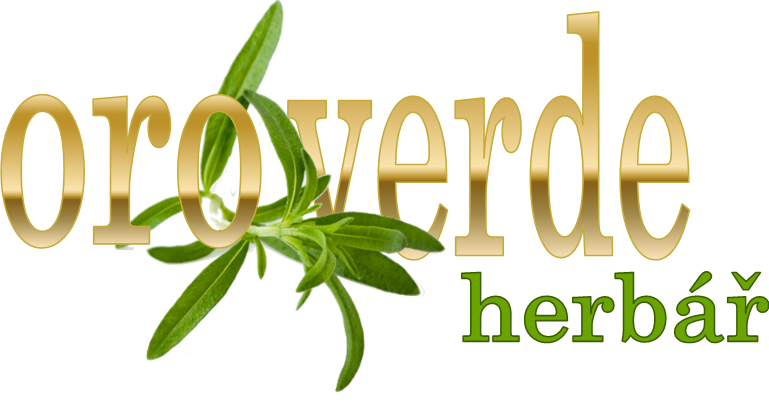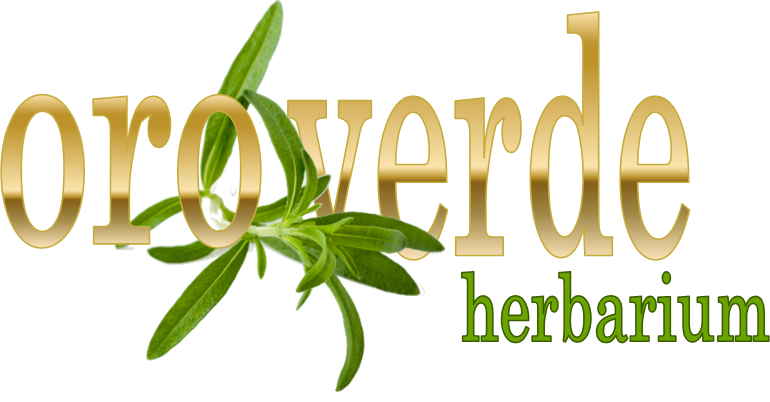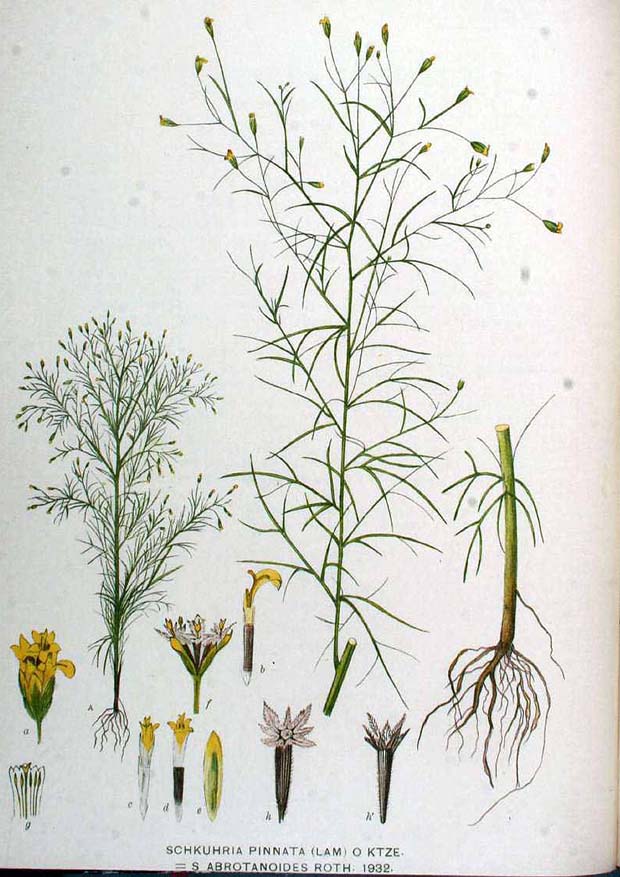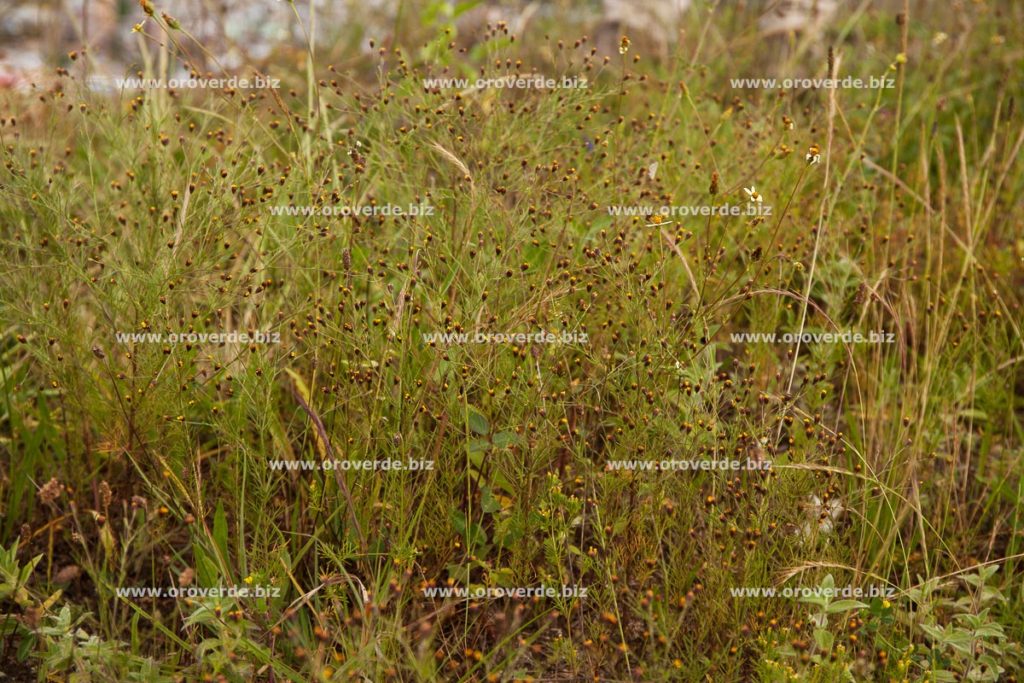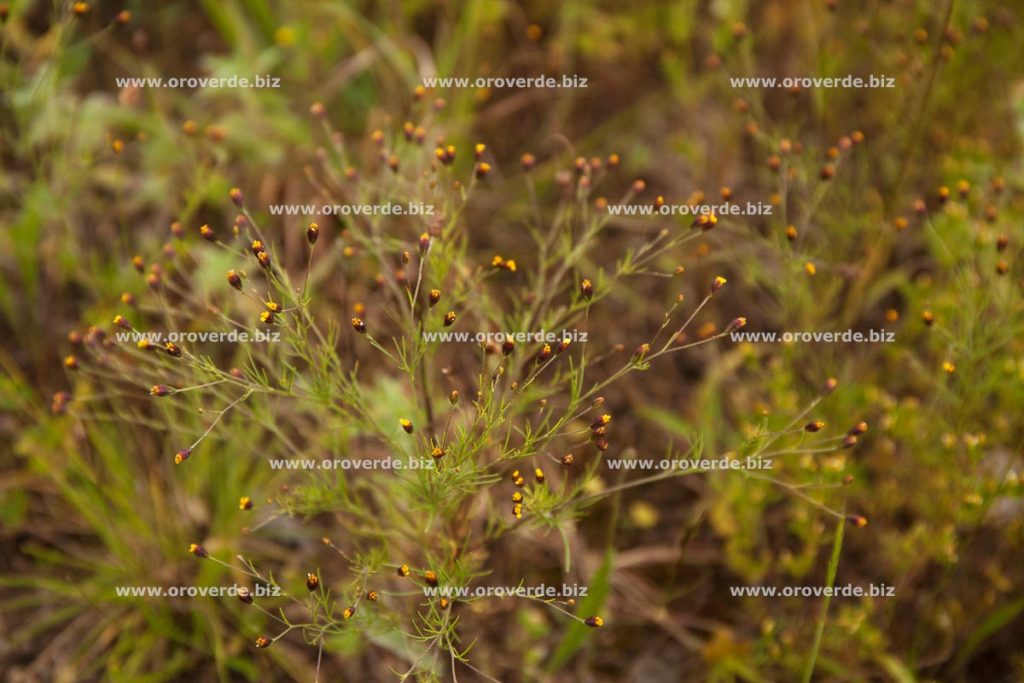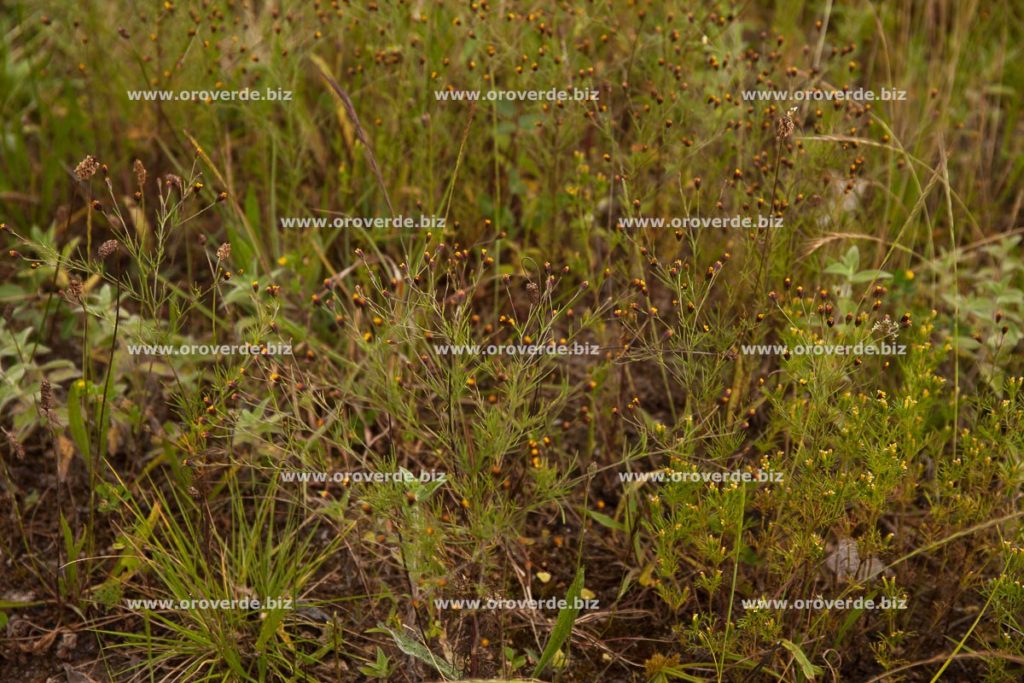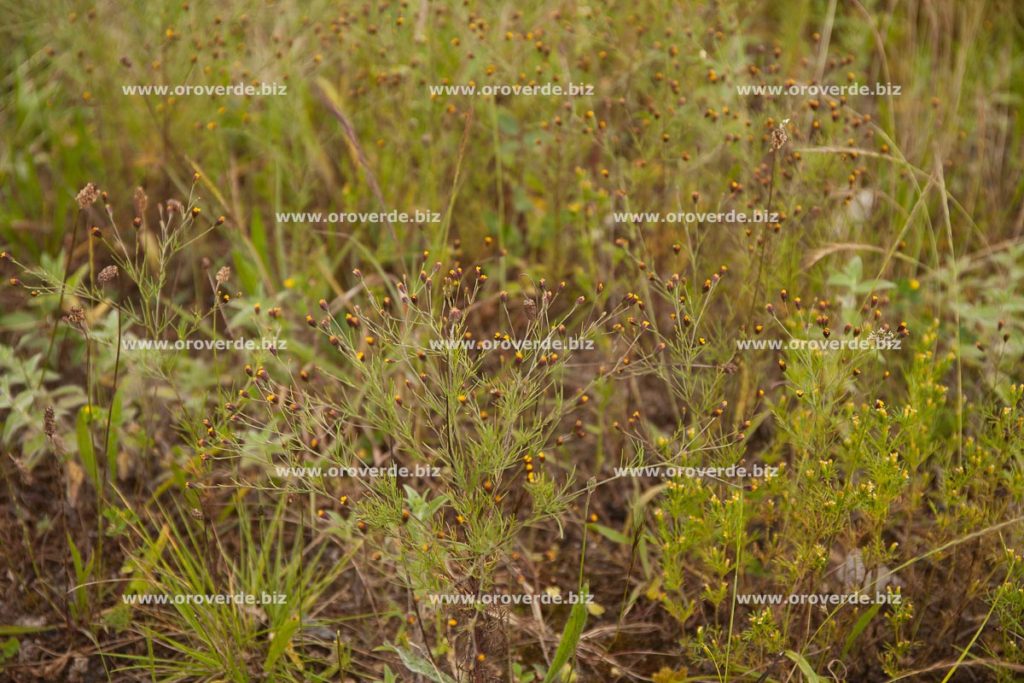It affects the following diseases:
Family: Asteraceae ( Compositae )
Genus: Schkuhria
Species: pinnata ( Lam. ) Kuntze
Common names:
Escoba de anisillo, karatataraku putsutiri (purépecha), tacote. kanchalagua, piqui pichana, kanchlawa, kuti pichaňa.
Part(s) used:
Aerial parts the plant, shoot with leaves and flowers (Herba schkuhriae).
Description:
Canchalagua is a herb growing up to 50 cm, of inconspicuous appearance, looking like a dry (parched) plant. Rich flowers are very small and almost invisible. It is common on the slopes and hillsides, in the undergrowth and even in the proximity of agricultural estates. It occurs in the altitudes up to 3800 m above sea level. Weberbauer describes genus Schkuhria typically occurring on the mountain ranges and in the central belt of the eastern part of the Cordilleras. Herrera mentions this too, and points out to a possible confusion with Chilean species Schkuhria octoaristata, also known as „kanchalagua”.
The herbal medicine of native tribes uses it mainly to regulate the menstruation, for bad eyesight, as a general depurative, for hepatic and bilious inconveniences, to clean skin speckles, against malaria and yellow fever and as an ointment for wounds and injuries (in combination with other herbs).
The herb is described in the 3rd volume of Mexican formulary. It mentions its spasmolytic effect.
Contraindications:
Are not mentioned
Side effects:
Possibility of fotodynamic and allergic manifestations on particularly sensitive individuals.
Traditional enthomedicinal uses:
For irregular menstruation, hepatic difficulties, skin speckles or for general purification of blood: all above ground parts of the plant – prepare infusion of 5 grams for one litre of water, sip a cup 3 times a day.
More information you can look on the site about ordinary preparation of the herbal remedies.
Phytoterapeutic properties:
Antiseptic, depurative, emmenagogue, hepatoprotective, lipoprotective, menstruation relaguted.
Phytochemical composition:
Derivates of labden, germakrenolids, elematrienolids, thiarubrin A, derivates of ursan.
Source:
- Diccionario enciclopedico de plantas utiles del Perú, BRACK EGG A., CBC – Centro de Estudios Regionales Andinos «Bartolomé de Las Casas» , Cuzco, Perú, 1999 , ISBN 9972-691-21-0
- Jihoamerické léčivé rostliny a jejich užití středoevropskou populací, DORAZIL M., ZF MENDELU, Lednice na Moravě, 2007
- Plantas medicinales utiles en el Surandino del Perú, ROERSCH C., VAN DEN HOOGTE L., Koeltz Scientific Books, Königstein, Germany, 1998, ISBN 3-87429-369-67-2
- Vocabulario de los nombres vulgares de flora peruana, SOUKUP J. SDB, Editoria Salesiana, Lima, Perú, 1975
